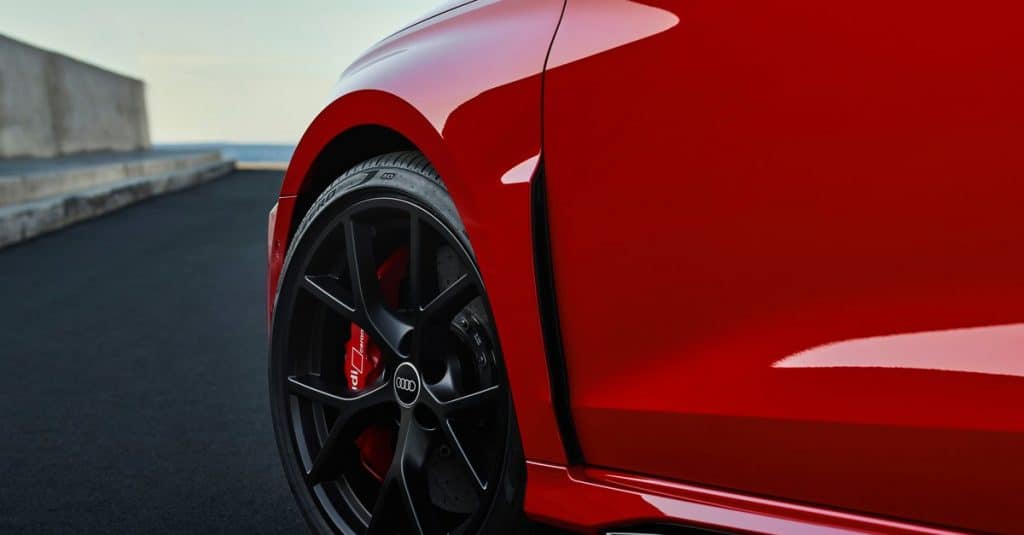Solid vs. Metallic vs. Pearl: Understanding Different Car Paint Types
When it comes to choosing the perfect colour for your car, the options seem limitless. From classic solid colours to eye-catching metallic and elegant pearl finishes, there are many different Car Paint Types to consider. Each type of car paint offers a unique appearance and characteristics, and understanding the differences between solid, metallic, and pearl paints can help you make an informed decision that suits your style and preferences.

Solid Paint
Solid paint, also known as monochromatic or single-stage paint, is the most basic and traditional type of automotive finish. This type of paint is composed of a single colour pigment mixed with a clear binder, which provides a smooth and consistent appearance. Solid colours are usually flat and without any additional reflective or decorative elements, making them ideal for a clean and straightforward look.
Advantages of Solid Paint:
- Cost-Effective: Solid paints are often the most budget-friendly option.
- Easy to Repair: Scratches and dings are generally easier to repair, as matching the colour is relatively simple.
- Classic Look: Solid colours provide a timeless and classic appearance that appeals to many car enthusiasts.
Disadvantages of Solid Paint:
- Limited Variety: Solid paints typically offer a more limited range of colour choices compared to metallic and pearl options.
- Less Dynamic: They lack the depth and sparkle that metallic and pearl finishes offer.
Metallic Paint
Metallic paint, as the name suggests, contains small metallic flakes or particles within the paint mixture. These flakes reflect light in various directions, creating a striking and dynamic appearance. Metallic paints can range from subtle shimmer to high-impact sparkle, depending on the size and density of the metallic particles.
Advantages of Metallic Paint:
- Eye-Catching: Metallic paints provide a unique, sparkling effect that enhances the car’s appearance, especially in bright sunlight.
- Hides Imperfections: The metallic flakes can help disguise minor imperfections like small dents or scratches.
- Resale Value: Many car buyers appreciate the premium look of metallic finishes, potentially increasing the vehicle’s resale value.
Disadvantages of Metallic Paint:
- Costlier: Metallic paints tend to be more expensive than solid colours due to the added complexity of the paint mixture.
- Challenging Repairs: Repairing damage to metallic paint can be trickier, as matching the exact sparkle and depth can be challenging.
Pearl Paint
Pearl paint is one of the most luxurious and visually captivating options for car finishes. It consists of a base coat with tiny reflective particles combined with a translucent, pearlescent topcoat. This unique combination results in a finish that shifts in colour depending on the viewing angle and lighting conditions, creating a rich and multi-dimensional appearance.
Read more: The Future Of Sat Navs: Trends And Innovations In The UK Market
Advantages of Pearl Paint:
- Unparalleled Depth: Pearl finishes offer an unmatched depth and colour-shifting effect that is sure to turn heads.
- Exceptional Aesthetics: The unique appearance gives a high-end, premium look to the car.
- UV Protection: The translucent topcoat can provide additional protection against UV rays, helping maintain the paint’s lustre over time.
Disadvantages of Pearl Paint:
- High Maintenance: Pearl finishes may require more care and attention to maintain their pristine appearance.
- Costly: Pearl paints are generally among the most expensive options due to the complexity of the painting process.
- Difficult Repairs: Repairing pearl paint can be challenging and may necessitate repainting entire panels for a seamless result.
FAQs
What’s the main difference between solid, metallic, and pearl car paint?
The primary difference lies in the appearance and composition of the paint. Solid paint is a single, flat colour. Metallic paint includes small metallic flakes for a sparkling effect, while pearl paint combines a base colour with a translucent, pearlescent topcoat for a multi-dimensional, colour-shifting look.
Are metallic and pearl paints more expensive than solid paint?
Yes, metallic and pearl paints are typically more expensive due to the additional complexity in their formulations and the materials used. They often require more meticulous application, which contributes to the higher cost.
Are solid colours easier to maintain than metallic or pearl finishes?
In general, solid colours are easier to maintain because they lack the added complexity and special care requirements of metallic and pearl paints. Metallic and pearl finishes may need more attention to retain their appearance and lustre.
Read more: The Science Behind Metallic Car Paint: A Deep Dive Into Sparkling Automotive Aesthetics
Can I repair scratches and dings in metallic and pearl paints as easily as with solid paint?
Repairing scratches and dings in metallic and pearl paints can be more challenging than in solid paint. Achieving a seamless match in colour and sparkle is often more complex, which may necessitate professional help.
Do metallic or pearl paints have any advantages beyond aesthetics?
Metallic paints can help hide minor imperfections, while pearl paints may offer additional protection against UV rays due to their translucent topcoat. These factors can contribute to the overall longevity of the paint.
Do car paint types affect the resale value of a vehicle?
Yes, the choice of car paint can impact the resale value. Many buyers appreciate the premium look of metallic and pearl finishes, which can potentially increase the vehicle’s resale value. However, personal preferences vary, so it’s essential to choose a paint type that suits your taste.
Are there limitations in colour choices for metallic and pearl paints?
While metallic and pearl paints offer a wide range of colour options, they may be more limited compared to solid colours. However, manufacturers continually expand their colour palettes to meet consumer demand.
Can I change my car’s paint type after it’s been painted?
Changing your car’s paint type, especially from a solid to a metallic or pearl finish, can be a complex and expensive process. It may require stripping the existing paint and repainting the entire vehicle, so it’s not a decision to be taken lightly.
Do car paint types affect fuel efficiency or performance?
Car paint types do not significantly impact fuel efficiency or performance. However, darker paint colours may absorb more heat, potentially making the interior warmer in hot weather, which could affect the air conditioning’s energy consumption.
Are there any specific maintenance tips for metallic and pearl paints?
Yes, maintaining metallic and pearl paints may require extra care. Regular washing, waxing, and avoiding abrasive materials during cleaning are essential. Additionally, parking your vehicle in shaded areas or using car covers can help preserve the paint’s finish.
Choosing the right car paint types ultimately depends on your preferences, budget, and how much care and maintenance you are willing to invest in keeping your car looking its best. Always consult with professionals and do your research before deciding to ensure your choice aligns with your needs and style.
Conclusion
The choice of car paint types ultimately comes down to personal preference, budget, and the desired aesthetic. Solid paint offers simplicity and affordability, metallic paint adds a touch of sparkle and hides imperfections, while pearl paint delivers unparalleled depth and a captivating appearance. When making your decision, consider your budget, the intended use of the vehicle, and the level of care and maintenance you are willing to invest in keeping your car’s paint looking its best. Regardless of your choice, each type of paint offers a unique way to express your style and personality through your vehicle’s appearance.

